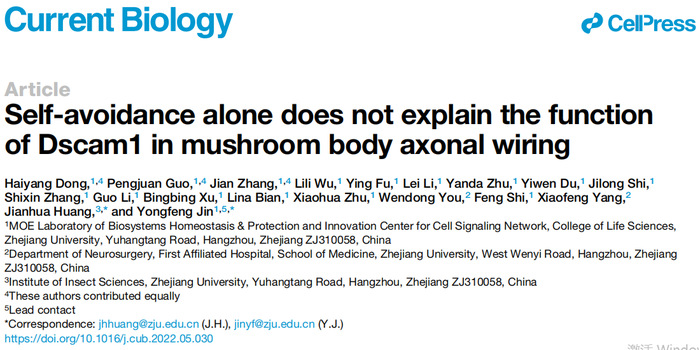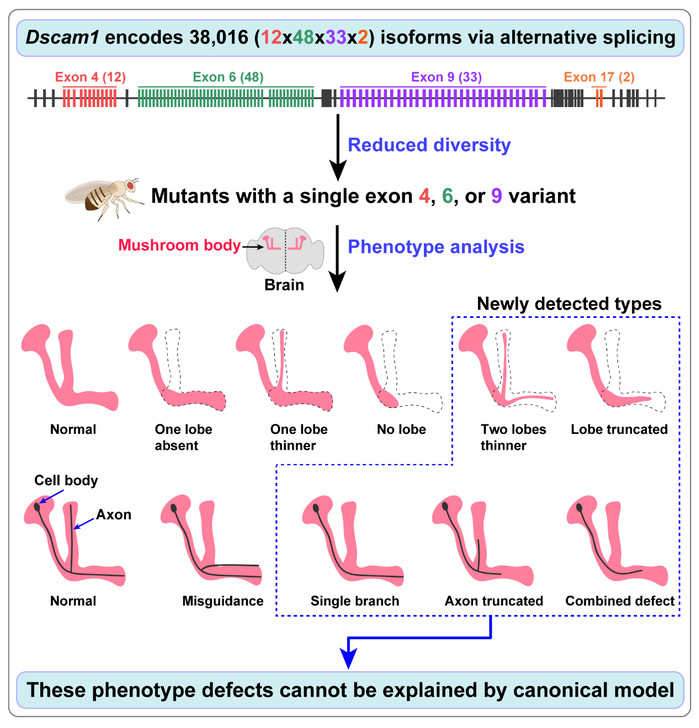
Title: Self-avoidance alone does not explain the function of Dscam1 in mushroom body axonal wiring
Haiyang Dong, Pengjuan Guo, Jian Zhang, Lili Wu, Ying Fu, Lei Li, Yanda Zhu, Yiwen Du, Jilong Shi, Shixin Zhang, Guo Li, Bingbing Xu, Lina Bian, Xiaohua Zhu, Wendong You, Feng Shi, Xiaofeng Yang, Jianhua Huang, Yongfeng Jin
Summary
Alternative splicing of Drosophila Dscam1 into 38,016 isoforms provides neurons with a unique molecular code for self-recognition and self-avoidance. A canonical model suggests that the homophilic binding of identical Dscam1 isoforms on the sister branches of mushroom body (MB) axons supports segregation with high fidelity, even when only a single isoform is expressed. Here, we generated a series of mutant flies with a single exon 4, 6, or 9 variant, encoding 1,584, 396, or 576 potential isoforms, respectively. Surprisingly, most of the mutants in the latter two groups exhibited obvious defects in the growth, branching, and segregation of MB axonal sister branches. This demonstrates that the repertoires of 396 and 576 Dscam1 isoforms were not sufficient for the normal patterning of axonal branches. Moreover, reducing Dscam1 levels largely reversed the defects caused by reduced isoform diversity, suggesting a functional link between Dscam1 expression levels and isoform diversity. Taken together, these results indicate that canonical self-avoidance alone does not explain the function of Dscam1 in MB axonal wiring.

Graphical abstract





